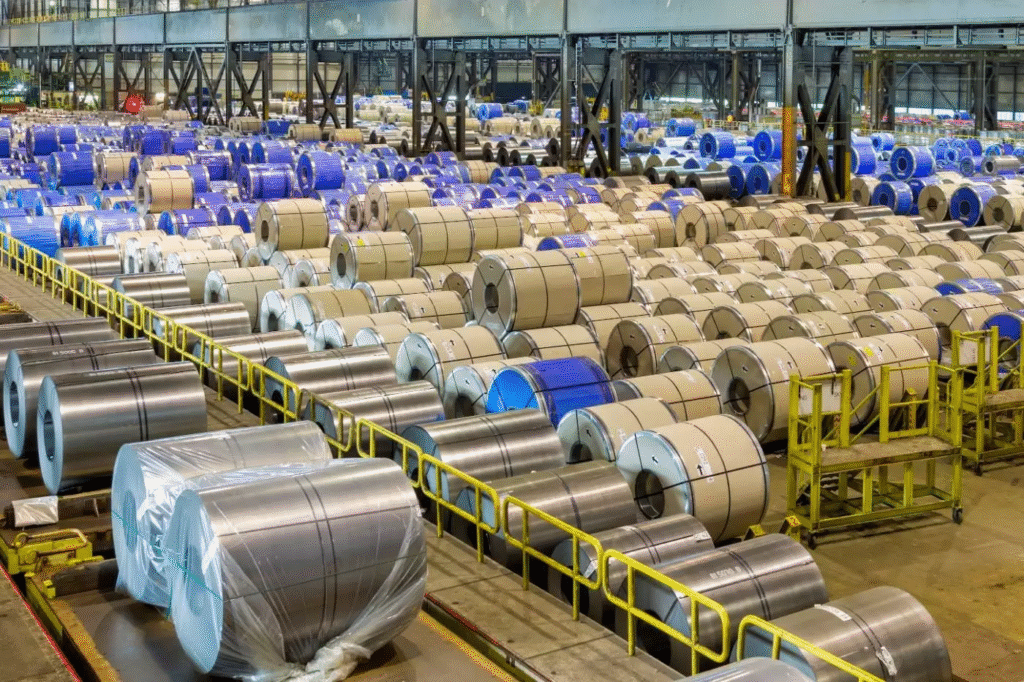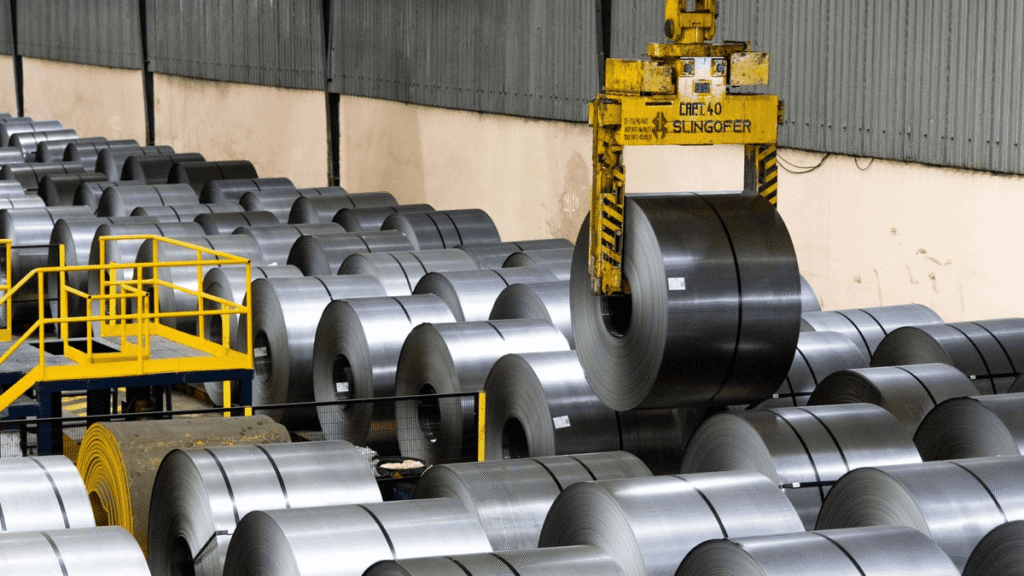
Tata Steel’s journey in the global market has been one of impressive growth, marked by consistent strategic moves aimed at expanding its operations, increasing production efficiency, and gaining a competitive advantage. With its roots in India, Tata Steel has successfully established a significant footprint across the world, making it a major player not just in the Asian markets but in global steel production.
The company has effectively capitalized on the increasing demand for steel driven by global industrialization and infrastructure development. The Asian markets, particularly India, have remained strong pillars supporting the company’s revenue growth, while its presence in Europe has allowed it to tap into developed markets with higher-margin steel products. Tata Steel’s product portfolio includes a range of carbon steel, stainless steel, and alloy products, which cater to sectors such as automotive, construction, energy, and manufacturing.
The Evolution of Tata Steel’s Production Capacity
Over the years, Tata Steel has substantially increased its production capacity, positioning itself as one of the largest steel manufacturers globally. The company’s production plants are equipped with state-of-the-art technologies that ensure high efficiency, consistency in quality, and cost-effectiveness.
Tata Steel’s long-term strategy revolves around enhancing production capacity while also minimizing environmental impact. The company has been making strides in adopting sustainable practices, including the use of electric arc furnaces and the implementation of carbon capture technologies, to ensure that its expansion does not come at the cost of environmental sustainability.
Strategic Acquisitions and Expansions: Enhancing Global Reach
One of the key strategies behind Tata Steel’s remarkable growth is its focus on strategic mergers and acquisitions. These acquisitions have not only increased the company’s production capabilities but have also allowed it to enter new markets and diversify its product offerings. A notable example of this strategy is the acquisition of Corus Group, which significantly strengthened Tata Steel’s presence in Europe. This acquisition allowed the company to tap into high-margin markets and gain access to advanced technologies and a robust distribution network.
In addition to Corus, Tata Steel has also acquired Bhushan Steel, a leading Indian steel producer, further solidifying its position in the domestic market. These strategic moves have helped Tata Steel diversify its customer base, access new technologies, and gain operational synergies, which have translated into improved financial performance.
The company’s international presence has also been bolstered by its operations in countries like the United Kingdom, the Netherlands, and Thailand. Tata Steel’s ability to navigate geopolitical complexities and manage cross-border operations has made it a global leader in the steel industry.
Financial Performance and Consistent Profitability
Tata Steel’s financial performance has been nothing short of impressive. Over the years, the company has demonstrated consistent revenue growth and has been able to weather market fluctuations, which are common in the cyclical steel industry. Despite global economic challenges, Tata Steel has managed to maintain profitability by focusing on operational efficiency and reducing costs.
The company’s strong financial health is a testament to its management’s ability to optimize its operations, reduce debt, and invest in high-growth areas. Tata Steel has also been able to maintain a strong cash flow, allowing it to reinvest in research and development, new technology, and capacity expansion projects. The company’s focus on maintaining a strong balance sheet and improving shareholder value through dividends and stock buybacks has made it an attractive investment for institutional and retail investors alike.
Tata Steel’s Strategic Investments in Technology
As part of its long-term growth strategy, Tata Steel has made significant investments in technology to enhance its production capabilities and reduce operational costs. These investments are aimed at improving efficiency, reducing energy consumption, and minimizing the environmental impact of steel production. The company has also been focusing on advanced technologies such as automation, AI, and data analytics to improve the quality of its products and streamline its operations.
One of the key technological initiatives by Tata Steel is its focus on innovation in steelmaking processes. The company has been developing and implementing new steel grades that cater to industries such as automotive, energy, and construction. By creating products that meet the specific needs of various industries, Tata Steel has been able to differentiate itself in the competitive global steel market.
Sustainability in Steel Production

The steel industry has come under increasing scrutiny for its environmental impact, particularly in terms of carbon emissions and energy consumption. Tata Steel has made sustainability a core component of its business strategy. The company has taken significant steps to reduce its carbon footprint by investing in clean technologies, improving energy efficiency, and exploring alternative energy sources.
Tata Steel’s efforts in sustainability are not just limited to its operations but also extend to the broader steel supply chain. The company works closely with suppliers to ensure that they adhere to sustainability standards, ensuring that its entire value chain is environmentally responsible. Tata Steel has also been active in promoting recycling initiatives and has focused on creating a circular economy model in its operations.
The Future of Tata Steel: Market Forecast and Outlook
Looking ahead, Tata Steel is well-positioned to benefit from the ongoing recovery of global economies, especially as industries begin to ramp up production post-pandemic. The demand for steel is expected to remain strong, driven by continued urbanization, infrastructure projects, and the growth of industries such as automotive and construction.
Moreover, Tata Steel’s focus on technological innovation and sustainability will likely help it maintain its competitive edge in the global market. As governments around the world continue to prioritize green technologies and sustainable practices, Tata Steel’s commitment to reducing its environmental impact will enhance its appeal to socially responsible investors and customers.
The company’s strong presence in India, coupled with its global operations, gives it a diverse customer base and market exposure. This diversity allows Tata Steel to mitigate risks associated with regional economic downturns or geopolitical tensions, ensuring that it remains resilient in the face of external challenges.
Geopolitical and Macroeconomic Risks
While the outlook for Tata Steel remains positive, there are several risks that investors must consider. The steel industry is heavily influenced by global economic conditions, and any downturn in major economies could impact demand for steel products. Additionally, fluctuations in commodity prices, such as iron ore and coal, can significantly affect the company’s production costs.
Geopolitical tensions, particularly in regions where Tata Steel operates, can also pose risks to its business. The steel industry is highly competitive, and changes in trade policies, tariffs, and foreign exchange rates can have a significant impact on profitability.
Despite these risks, Tata Steel’s diversified operations, strong brand, and focus on sustainability position it well for long-term success. The company’s ability to adapt to changing market conditions and its commitment to innovation and operational excellence will likely continue to drive its growth in the coming years.

